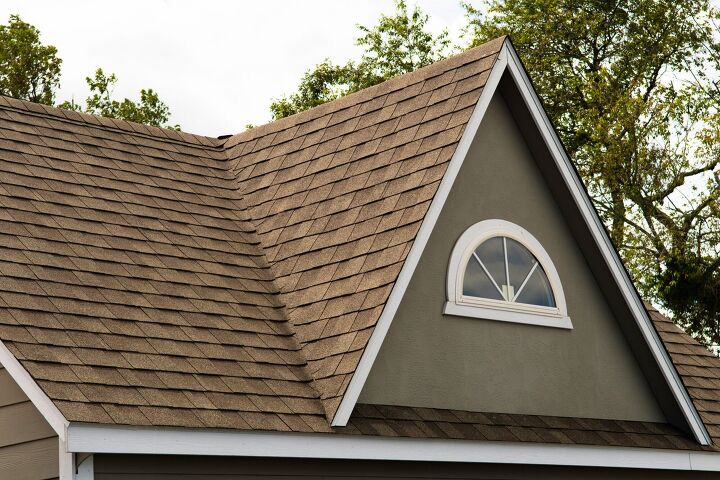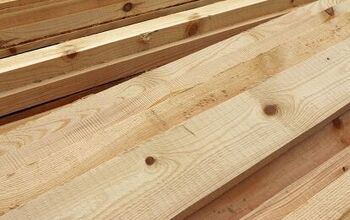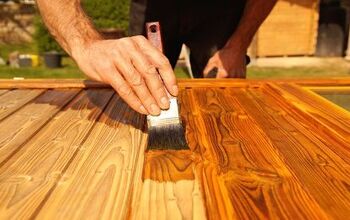Landmark Driftwood Vs. Weathered Wood: What Is The Difference?

Believe it or not, your roof is one of the most important aspects of the exterior of your home. Since roofs typically last around 20 years, the shingle color you choose is a major decision to make and one you will likely be stuck with for quite a while. As such, choosing the right shingle color will ensure that your home has curb appeal and looks beautiful for years to come. In order to make an informed decision, you must consider the style of your home, the climate you live in, and the look you’re trying to achieve.
Landmark is among the most popular and best-selling asphalt shingle brands in both the United States and Canada. Particularly, their Weathered Wood and Driftwood colors are some of the most popular color options that homeowners choose as their roof shingles.
Although the two colors are very similar upon first look, weathered wood leans browner and driftwood has more grey overtones. Both colors are also available as ‘Max Def,’ which appear more dramatic, vibrant, brighter, and have more depth.
Let’s take a deeper look at Landmark shingles, from CertainTeed, along with their top competitor: GAF’s Timberline shingles. We’ll also outline some tips for picking the best roof shingle color so you can finally narrow down whether driftwood or weathered wood will look better on your home.
Related Content: Are Architectural Shingles Worth The Extra Cost? | How To Tie Into Existing Roof Shingles | Do New Roof Shingles Settle? | Can You Paint Asphalt Shingles?
Do You Need Roofing Repair Services?
Get free, zero-commitment quotes from pro contractors near you.

Landmark Shingles
Manufactured by CertainTeed, the classic architectural Landmark shingles appeal to many homeowners because they offer a wide range of color options. These shingles are high-quality, reliable, and are an excellent choice for both protecting and adding beauty to your home. They are made with a dual-layered design that imitates the dimensionality of a true wood shake, offering the heaviest weight in their class.
With Landmark shingles, you can create or reinvent your home with ultimate customization. Not to mention, all of their shingles come with a lifetime-limited warranty. The classic Landmark shingles are currently available in 17 distinct colors, displayed below. They are a basic grade of architectural shingle and cost approximately $78 a square.
Landmark PRO
A step above the classic line, Landmark PRO is a leader in its class in terms of color variety, durability, and performance. These shingles were created to meet professional contractors’ exact specifications. They feature two laminated layers and outweigh standard laminates to deliver greater protection from the elements. Landmark PRO shingles come in a wide selection of striking Max Def colors.
With Max Def, an additional dimension is added to the shingles, along with a richer blend of surface granules. As a result, you enjoy brighter, deeper, and more dramatic colors. These shingles cost around $120 a square, and are a step up from the classic version in terms of grade. These 7 types of Japanese wood suit several different styles.
Landmark Premium
Landmark Premium is a luxury offering that is incredibly heavy and durable, at roughly 300 pounds a square. These shingles are engineered to outclass every other shingle in terms of durability and life expectancy. The two-piece laminated shingles consist of a fiberglass core, and Max Def color granules for a deeper, more textured appearance.
When compared to Landmark PRO, Landmark Premium has more limited color options. Though this series is considered a luxury option, it still maintains a relatively reasonable price. They are the highest grade available, costing about $150 a square. Check out these 8 types of wood panels.
Driftwood vs. Weathered Wood
Weathered wood is arguably the most common type of roof color among residential homes. It roughly resembles the same color as an aged cedar shingle. Although weathered wood does dominate roof shingle colors across the United States, there are actually many variations of weathered wood. Each manufacturer has a different interpretation of the color, so you can expect slight differences from manufacturer to manufacturer.
For example, both CertainTeed and GAF have two different forms of weathered wood. They have the classic version of the color and a variegated option that claims to be more vibrant and dramatic. Driftwood, on the other hand, is very similar to weathered wood. Both colors are a blend of grey and brown. Though, weathered wood contains more brown highlights and driftwood features more grey overtones with little splashes of brown throughout.
Of the two, weathered wood is a bit lighter, while driftwood offers a more blended appearance. Your choice between driftwood and weathered wood ultimately comes down to personal preference and the style of your home.
CertainTeed Landmark vs. GAF Timberline
Landmark and Timberline are the two most popular asphalt shingle brands in the United States and Canada. Both also offer their shingles in driftwood and weathered wood. One of the main factors that sways homeowners toward one manufacturer or the other is curb appeal.
Generally speaking, Landmark shingles are preferred among those looking for a wider range of color options. These shingles are also thicker than Timberline and have a weightier appearance. Because of this, many homeowners and contractors alike find Landmark to be a bit more upscale than Timberline.
GAF Timberline, on the other hand, offers a stylish pallet consisting of multi-tone variations in individual pieces, but less variety overall. Timberline shingles are also more affordable than Landmark, which tends to make them more popular among budget-conscious shoppers. Regardless, both are durable, reputable, and likely offer the colors you’re looking for.
Do You Need Roofing Repair Services?
Get free, zero-commitment quotes from pro contractors near you.

How to Pick the Best Roof Shingle Color
The color shingles that you choose for your home can be one of the biggest decisions you make about your property. You want both the color and the material of your roof to blend effortlessly with your home, your neighborhood, and the natural surroundings.
Depending on the style of your house, your roof makes up roughly 40% of the visible exterior. The shingle color that you choose should enhance both the value and curb appeal of your property, while also allowing you to express your personality and aesthetic desires. With that said, here are some tips for getting on the right track with choosing the best roof shingle color for your home:
1. Choose a color that works well with your house color
Your shingles can either create visual contrast with your siding materials, or they can blend into your home’s other features. If you prefer to go more traditional, stick to gray, black, and brown shingles. Or, if you want a contrasting pop of color on your roof, choose lighter tan or reddish-orange hues. For a staggered effect, you can also combine a mix of colors – such as tan and brown or gray and black.
2. Emphasize your home’s architectural style
Take a drive around several neighborhoods near you to get some inspiration about what roofing color would look best for your home style. Try to find homes with a similar exterior, shape, color, and architecture as yours. Then, make a note of what siding and roofing combinations look the most appealing to you.
3. Consider where you live
In the northern parts of the country, natural sunlight has a slightly cool, blue cast to it. Whereas, the light is much redder and warmer the farther south that you go. This means that the same color blend of icy blues and cool grays may not look as good on a home in sunny, warm Florida as it does on a home in New England.
When selecting a shingle color that compliments your home, always go off of physical samples in different lighting conditions. Keep in mind that the natural lighting will vary considerably based on location, not just the time of day.
4. Check shingle color rules for your neighborhood
Make sure that you check with your homeowner’s association if there are any rules regarding roofing color. That way, you don’t get too set on a shingle color and then realize that you are violating rules put in place by your homeowner’s association. Even if your neighborhood doesn’t have specific rules, you still want to consider how your roof is going to look alongside your neighbor’s homes.
Related Articles

Jessica considers herself a home improvement and design enthusiast. She grew up surrounded by constant home improvement projects and owes most of what she knows to helping her dad renovate her childhood home. Being a Los Angeles resident, Jessica spends a lot of her time looking for her next DIY project and sharing her love for home design.
More by Jessica Stone

































